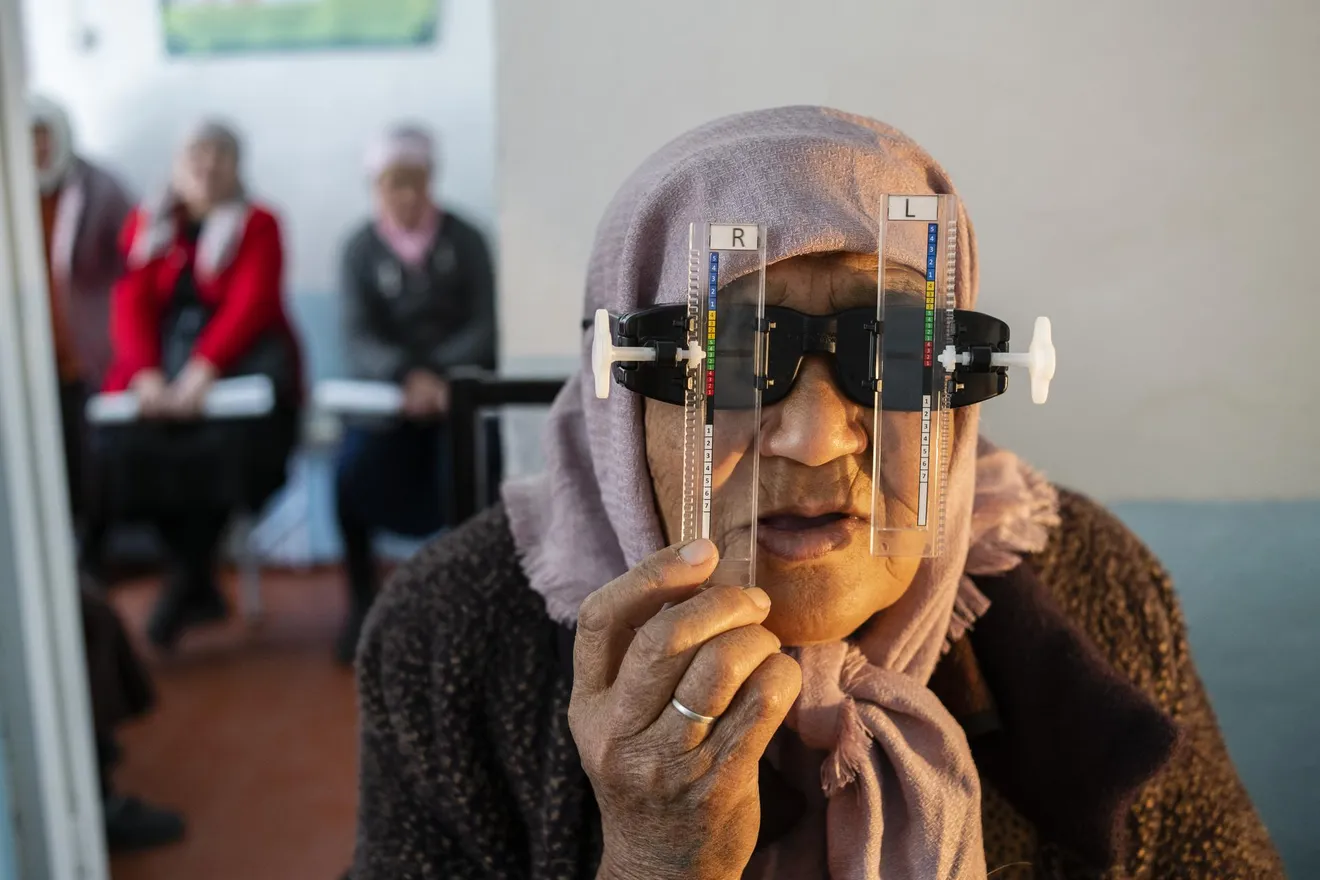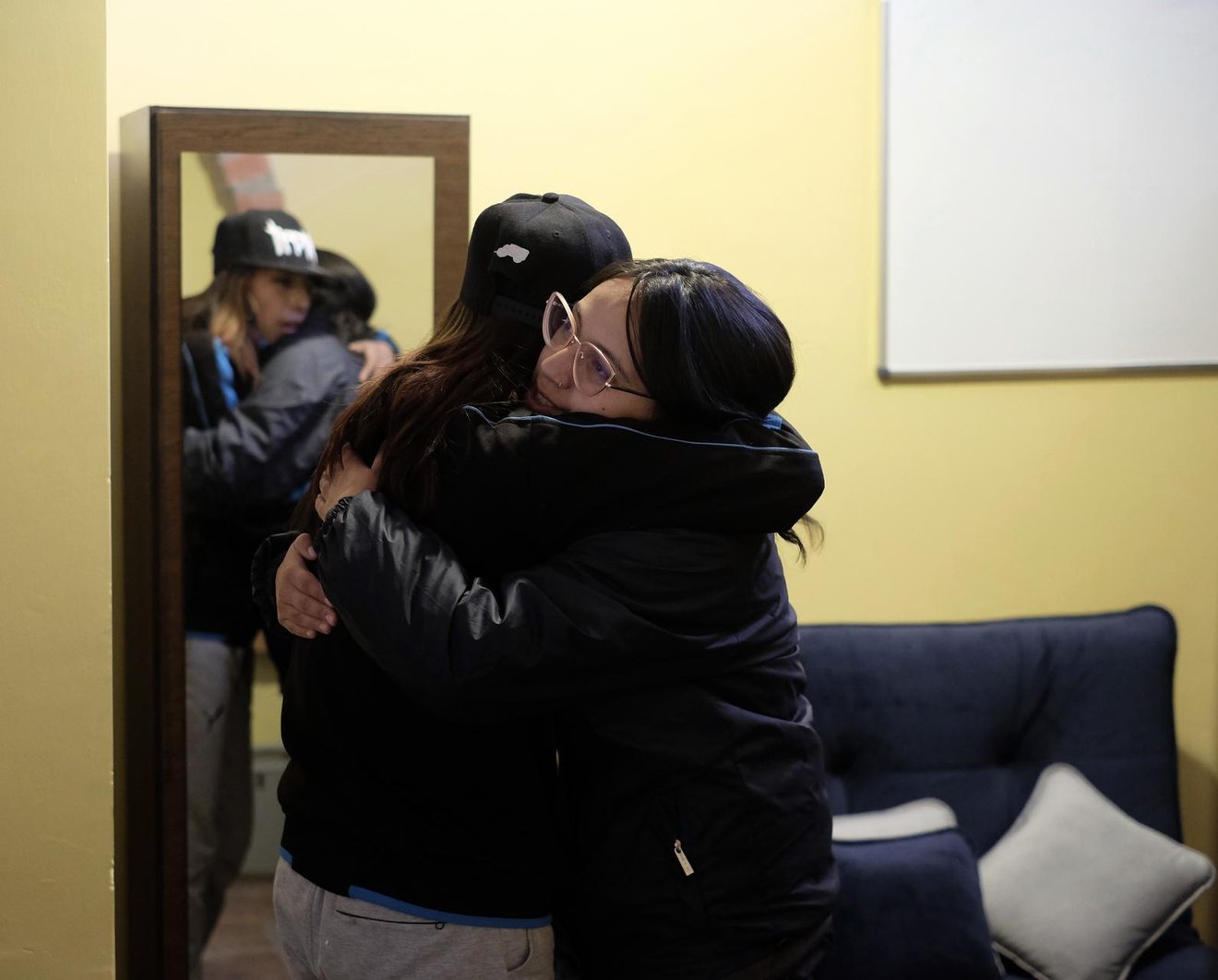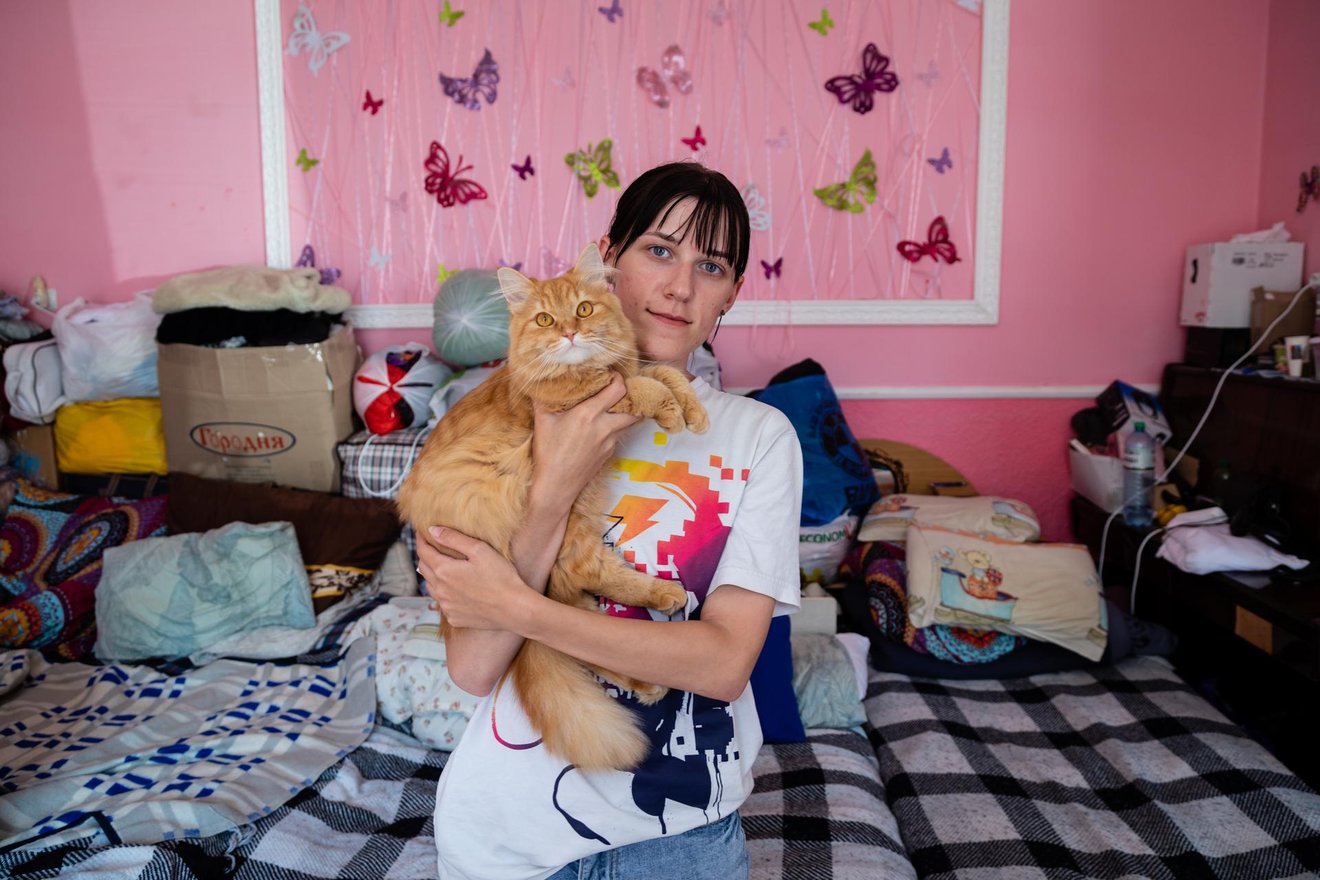In an age where technology continues to redefine the boundaries of creativity and communication, generative AI has emerged as a powerful tool in the realm of visual content creation. This groundbreaking technology will revolutionise the way we produce, consume, and interpret visual media and challenge our understanding and definition of an authentic image.
In this blog post, we will explore the diverse landscape of generative AI in visual communication, with a focus on authenticity. We will lay out some opportunities and risks of generative image and video AI text to image services like Midjourney, OpenAI’s DALL-E or Stability AI’s Stable Diffusion when it comes to authenticity and ethical communication.
The topics we address in this blog post were covered in a panel discussion during our FairTalk #9 on October 30, 2023, a summary of which can be found at the end of this blog article.

Kulayym Ergeshbayeva (76) eyesight check after operation at Feldsher-midwife station in Chiy-Talaa village.
Alai district, Kyrgyzstan 2023: Danil Usmanov / SRC / Fairpicture
The field of application of generative AI is so vast, raising questions around ethics, trust, profits, aspect, perpetuating bias and stereotypes, exoticism, and many other unsolved aspects of AI that it is necessary to narrow the focus. In order to have a structured discussion, we will focus on visual AI rather than text-based applications. We will also focus on the creative and ethical dimensions of the discussion in this blog post while acknowledging that the technical and legal aspects such as copyright infringements and creators rights are also important.
AI generative technology is here to stay and we first need to understand the opportunities and problem dimensions it will bring to visual communication and ethical communication in principle. When do we want to use it to tell stories, especially stories impossible to photograph? What is the affect on story ownership and resulting stereotypes if we prompt stories using AI instead of co-creating them with creators and the protagonists of the stories? What are new ways of combining both approaches?
1.Efficiency and Creativity:
One of the most significant opportunities offered by generative AI in visual communication is its capacity to streamline and enhance the creative process, allowing visual creators to automate laborious tasks such as image analysis, captioning, and editing. AI can also assist in generating ideas, concepts, and visualisations, freeing up creatives from repetitive tasks and allowing them to focus on more meaningful and innovative aspects of their work. Piper Hendricks wrote a convincing article about this concluding that this could lead to us having more time to develop real human relationships, a core element for ethical communication and storytelling.
Generative AI enables experimentation and exploration of novel ideas, fostering creativity by providing creators with new tools and perspectives. Which can potentially lead to a creative industry that is more diverse because more people participate in the process.

Clara (fictitious name), in a section with her psychotherapist Blanca Villarroel at the Maya Paya Kimsa facilities, which supports children and adolescents living on the streets. Clara was a girl who lived on the street, now she is an adult woman and she continues to go to Maya Paya Kimsa in search of support so as not to relapse.
El Alto, Bolivia, 2023: Wara Vargas / Eirene / Fairpicture | Read the full Case Study
2.Empowerment and Skill-Levelling:
Generative AI democratises the creative process by breaking down barriers to entry (given that the technology will not be monopolised). Traditional artistic skills are not prerequisites for generating compelling visual content using AI. This levelling of the playing field allows people from various backgrounds and skill levels to engage in visual storytelling, potentially unleashing a wave of fresh perspectives and voices in the creative industry.
1. Bias and Representation:
This newfound power of generative AI does however, come with its own set of challenges, one of the most prominent being bias and the promotion of stereotyping in their datasets. AI models, including those used for generating images, learn from vast datasets. If these datasets contain inherently biassed or stereotypical representations of people, objects, or concepts, the AI will inadvertently generate and reproduce images that reinforce those biases, amplify stereotypes and reinforce existing power imbalances. AI models are more likely to generate images that lack diversity in terms of race, gender, age, and other characteristics. This can lead to underrepresentation or misrepresentation of various groups, reinforcing stereotypes and limiting the inclusivity of visual content.
An alarming example is a recent experiment conducted by three ethics scholars who after more than 300 attempts were not able to produce a documentary style photo of black doctors treating white children with Midjourney Bot 5.1.
In an article by Bloomberg about racial biases of generative AI, Sasha Luccioni, a research scientist at AI startup Hugging Face, rightly pointed out that "we are essentially projecting a single worldview out into the world, instead of representing diverse cultures or visual identities." This has immediate consequences. Then people don't see themselves represented, feelings of exclusion and the belief that they don't belong are enforced.
These deficits of AI have the potential to destroy a lot of development in ethical communication of the last couple of years if they’re not carefully addressed both in the kind of technology we use and how we use it.
2.Psychological Effects and Trust Issues:
AI has the potential to manipulate images which can create misleading or false representations. Generative AI produces authentic-looking, visually striking imagery that blurs the line between reality and fiction and hence, a widely held concern is the threat that the technology poses to authenticity, truthfulness, credibility and trustworthiness of photojournalistic work. Of significant concern is the issue of trust and our definition of an “authentic” or “true” image. It is intuitively understandable and also theoretically argued that humans perceive photos and videos as reality because they function as a window into past realities or document things that exist or once existed.
As AI-generated content such as deepfakes become more prevalent, it threatens to erode trust in photographic materials. This has far-reaching consequences, affecting not only journalism or documentary work and the legal system but also impact driven brands and nonprofits who rely on credibility as their main currency.

Victoria was evacuated from the city of Orihiv, Zaporizhzhia region, last year. Now she lives in a shelter in the village of Kolchyno in Zakarpattia Oblast. Victoria is holding a kitten in her arms, which was taken from local residents. "We all lack home comfort," says Victoria.
Kolchyno in Zakarpattia Oblast, Ukraine 2023 : Katya Moskalyuk / Solidar Suisse / Fairpicture | Read the full Case Study
Aurel Vogel, Co-Founder Fairpicture
3. Misuse for Malicious Purposes:
Perhaps, the most alarming challenge associated with generative AI in visual communication is its potential for malicious use. Deepfakes, which involve the manipulation of AI-generated content to depict false scenarios, pose a significant threat to the credibility of visual media. The spread of misinformation through doctored visuals can have disastrous consequences for public discourse, politics, and individual reputations, further highlighting the need for authenticity in an era of AI-driven visuals.
This dimension is particularly problematic since authenticity solutions, both technical and visual, so far are all dependent on “good will”. Labelling a photo as “AI generated” only works if it’s done with good intent. As long as our (intuitive) starting presupposition of a (documentary) photograph or video is “this is authentic” the door is wide open for manipulation.
Fairpicture partnered with the startup Numbers Protocol, which specialises in content authentication of digital assets. Together, we organised an online event called "Authentic Images in Times of AI" on October 30th where we delved into the intriguing world of authentic images and dignified storytelling (watch the recording). Together we undertook a comprehensive exploration of authenticity, ethical considerations, and the evolving landscape of AI-generated images, stressing the importance of responsible and dignified storytelling in the digital era.
Some of the key discussions, insights, and questions raised during the event are summarised below:
Our 9th FairTalk revealed the complex interplay between authenticity, dignity, and the rise of AI-generated content in the world of visual storytelling. As AI technology continues to rapidly advance, it is essential to navigate these challenges with transparency, ethical considerations, and a commitment to promoting dignified narratives and images that reflect the diversity of our world. Ultimately, the goal is to foster a society where we can believe in the things we see, regardless of whether they are captured through a camera or generated by AI.
Stay posted by following us on LinkedIn.